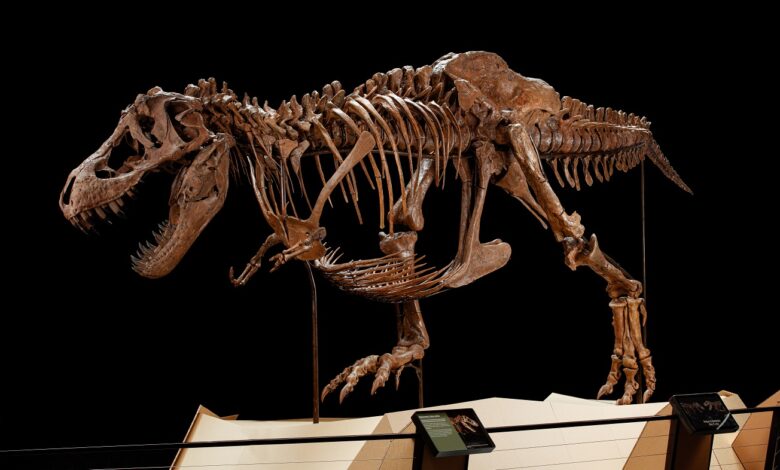Barbara and Peter, the first-ever female and male T.rex on show together, break all records

With just days left to run, the world’s first display of an adult male and female T.rex side by side is believed to be the most successful dinosaur exhibition of all time.
Already, 1.5 million people have visited Auckland Museum to see this spectacular exhibition, which has run for a year, and which will draw to a close on December 10, 2023. Given that New Zealand itself has a population of just 5.1 million inhabitants, the numbers who came to see the two T.rex dinosaurs, named Barbara and Peter, are unprecedented.
David Reeves, CEO of Auckland Museum, hailed the impact of the exhibition: “Not only have we seen visitor numbers equivalent to almost the whole of Auckland’s population of 1.6 million come through the doors, but Barbara and Peter have provided a once-in-a-lifetime, educational experience for many, many thousands of school children. It has been a joy to see people’s reactions as they encounter these magnificent specimens for the first time.”
Tyrannosaurus rex fossils are extremely rare, with only about 20 T. rex on display in museums worldwide. These were the first T. rex exhibits in the Southern Hemisphere. The world’s most famous dinosaur is so scarce that there is no T. rex on permanent exhibit in the Middle East, the whole of Asia, Africa or Latin America. There are only four T. rex on display in Europe.
Female T. rex specimens are rarer still, with Barbara representing only the third ever pregnant Tyrannosaurus rex dinosaur skeleton to be discovered. Barbara is 44.7 per cent complete, making her the 8th most complete T. rex in the world. She measures an impressive 11.7 metres long and 3.4m high.
Close viewing of the T.rex reveals some of the incredible anatomical features of one of the largest land predators of all time and offers the ability to inspect injuries that pathological findings revealed, specifically an injury to Barbara’s leg, likely to have been caused by another T.rex. It is remarkable that a massive animal like Barbara, which relied on walking or running on two legs as the primary method of locomotion, could survive such an injury. She lived for a long period after the injury, as can be seen by the evidence of a healed metatarsal.
Dr Andre Lujan, President of the Association of Applied Paleontological Sciences, said: “The Auckland Museum should be congratulated on this ground-breaking world first exhibit of a male and female T.rex together. Visitor numbers show that a huge percentage of New Zealand’s children got to see these magnificent specimens, which is a wonderful inspiration for the next generation of paleontologists.”
Alongside the exhibiting of Barbara and Peter, Auckland Museum has made public the preliminary scientific research on the specimens, undertaken by expert academics. According to David Reeves: “The publication of this research, made available to the museum and its visitors, is a novel and hugely important concept, designed to bridge the gap for the lay observer between the learned, peer-reviewed academic reports and the very limited data typically supplied to visitors by museums in support of such exhibits. This has truly ignited the imagination of young scientists in New Zealand.”
These preliminary reports have been prepared by two of the world’s top theropod paleontologists, Dr David Burnham (University of Kansas Biodiversity Institute and Natural History Museum) and Dr John Nudds (Department of Earth and Environmental Sciences, University of Manchester), who studied both Barbara and Peter in their university laboratories for many months.
Dr Nudds commented: “These reports are designed to encourage children and young people to learn about the extraordinary world of theropods, a subject that has fascinated me for my entire professional life.”
Dr Burnham added: “Barbara and Peter each represents an individual animal that was a living and breathing organism. Studying and reporting publicly about each individual specimen means it becomes part of the entire body of knowledge about Tyrannosaurus rex. Therefore, every documented specimen counts enormously, not least because there are so very few.”
This unique display, together with published research, has afforded the public to gain a deeper understanding of the history and mysteries of the T.rex, providing insights into their origins, lives, and the remarkable process of finding and mounting fossil specimens.
The exhibition will close soon, but already 1.5 million people have been thrilled by the once-in-a-lifetime opportunity to stand face-to-face with two real T. rex, brought together for the first time in 66 million years.




